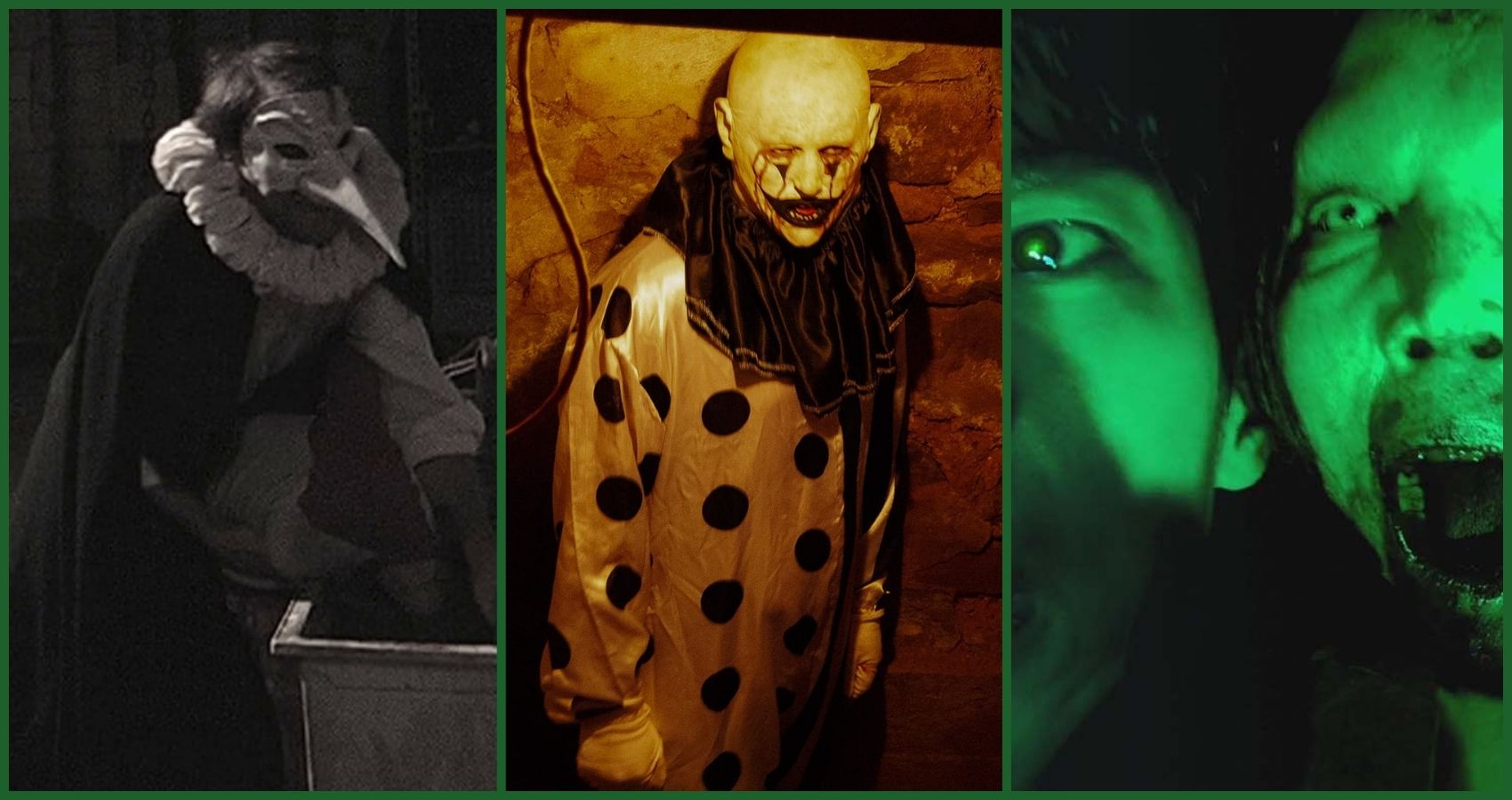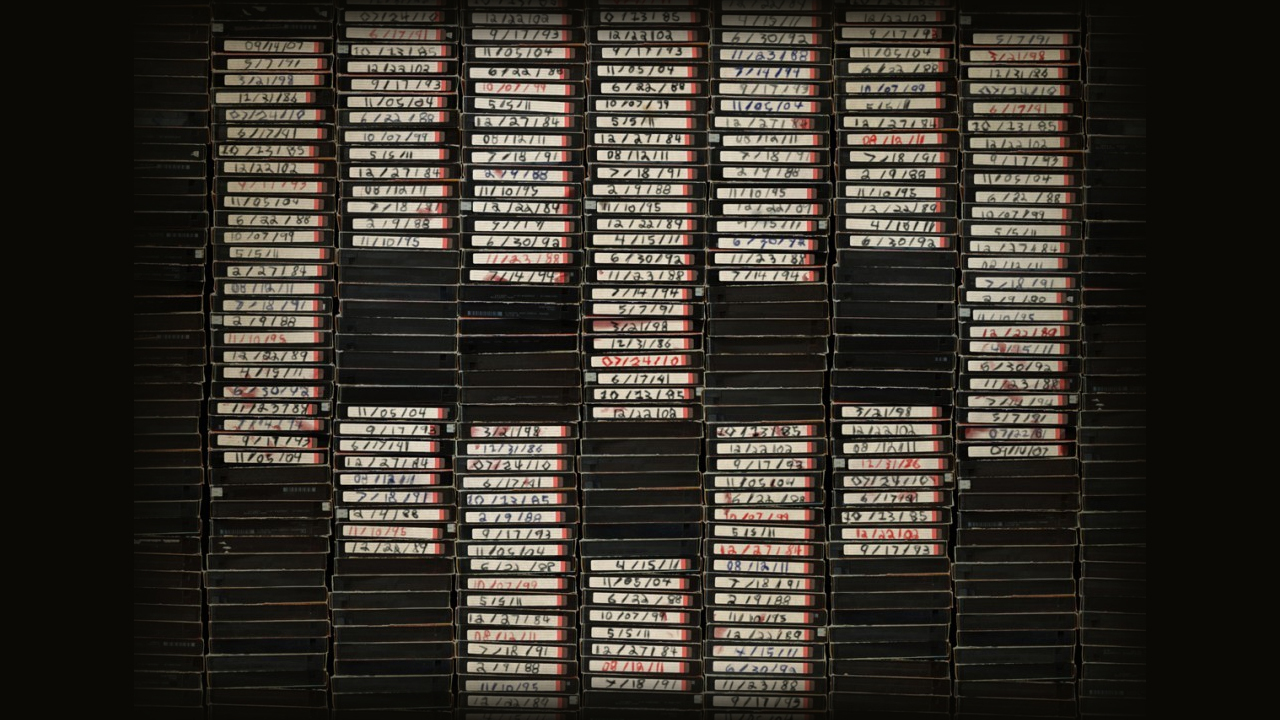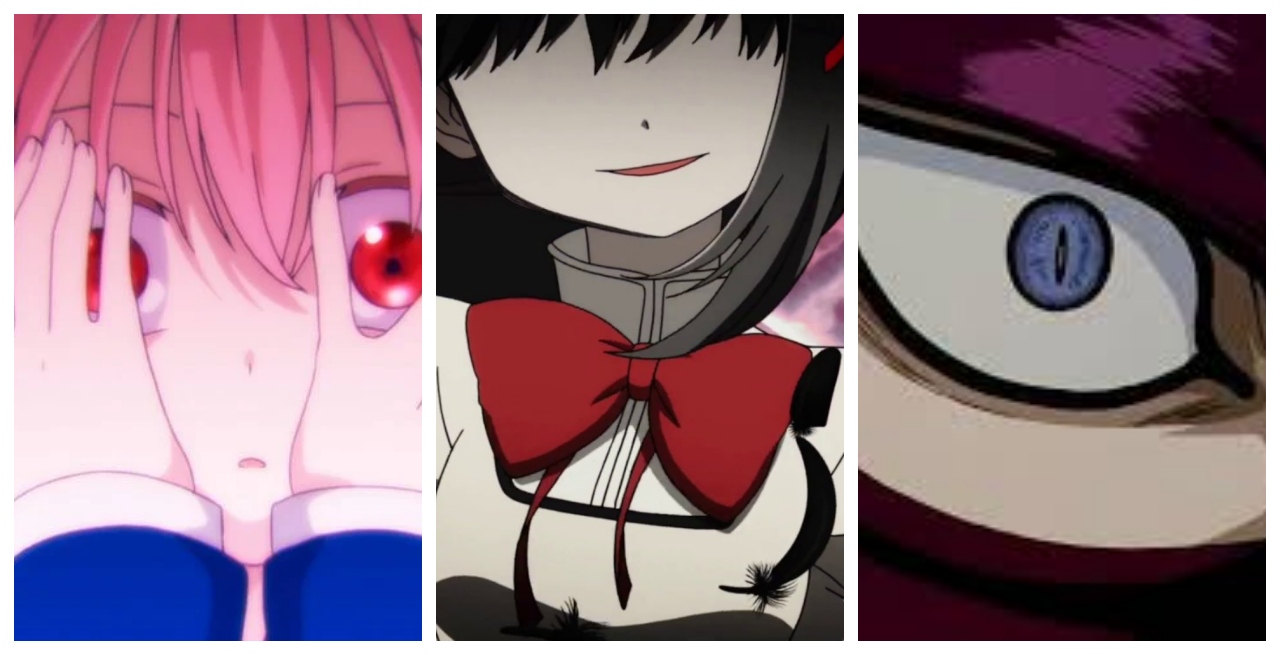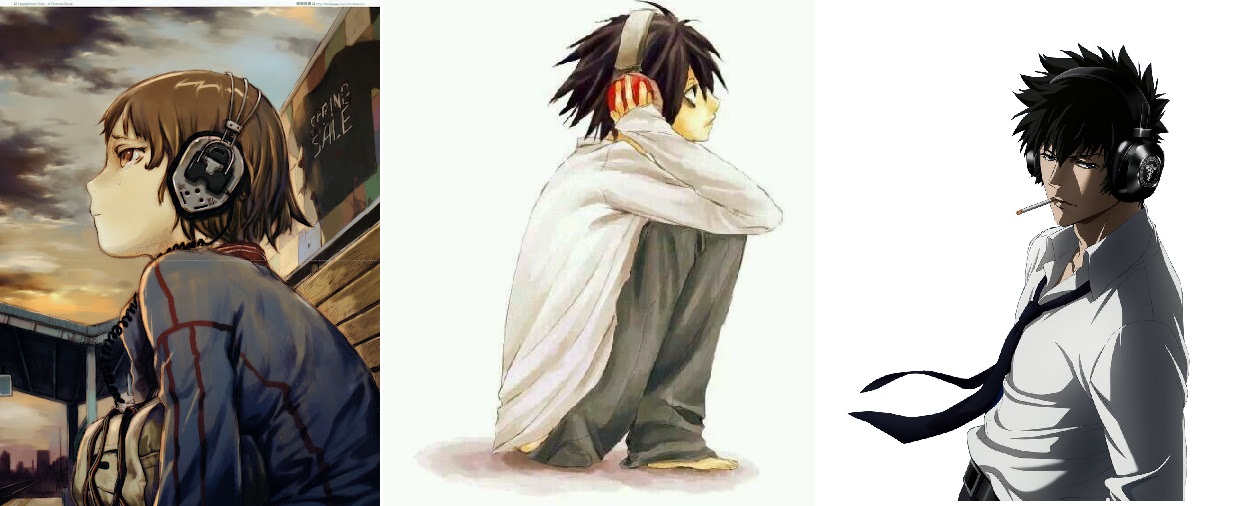
With the release of the new ‘Cowboy Bebop‘ live-action show, and a new Yoko Kanno soundtrack, perhaps it’s time to look at one aspect of anime that is often neglected: the music, and the way it is used by anime creators to tell the story. Why did that show choose that exact OP or ED song? Why have some songs become so iconic that they almost surpass the shows themselves? What is ‘anison‘ anyway? What is the difference between it and ‘theme song’? Read on, as we take a look at some of the best horror anime music over the last decades. We will analyze the music itself, how it is used in the context of its respective show, and get to that anison definition eventually and to why we feel it’s both a good and a bad thing.
The Japanese music industry is a haven for anime creators, and the main aim of this article is not to create a comprehensive list, but maybe get anime viewers to consider the songs they feel are most memorable, and to promote Japanese music. Fan translations are a necessary tool for analyzing anime music, and we will rely on them when discussing themes and why some songs work so well.
1. Paranoia Agent OP – Dream Island Obsessional Park (Susumu Hirasawa)
The life and influences of Japanese electronica pioneer Susumu Hirasawa is as interesting as the sum of fears and obsessions which converge into the audiovisual whirlwind that is the opening of Satoshi Kon’s masterpiece, ‘Paranoia Agent‘. A techno-symphony of sorts, it foreshadows many of the themes and plotlines of the show – the collective fear of overpopulation, nuclear power, tsunamis, workplace exploitation, and violence (it is no wonder that Hirasawa is a frequent collaborator of Kon’s – he is interested in psychology and especially in the collective unconscious, and a bit of a controversial figure himself – you can read more about him here). Meanwhile, the reason why the theme has become so iconic is perhaps its challenging nature – an editorial review on Amazon says that, “composer Susumu Hirasawa takes listeners on a schizophrenic journey to unbelievably simple, yet beautifully strange compositions, relentlessly shifting with the hum of electronic whirring, breathless beats and infectious chanting spliced in. From the opening vocal song, “Dream Island Obsessional Park” to the eerie ending, “White Hill – Maromi’s Theme,” nothing on this 19-track CD is ordinary music.”
2. Serial Experiments Lain OP – Duvet (Bôa)
An iconic opening song for such an iconic series, ‘Duvet‘ is perhaps the very reason for this article existing in the first place. Bôa is a British band, and singer Jasmine Rodgers comes across as a cross between Mazzy Star’s Hope Sandoval, Slowdive’s Rachel Goswell and Natalie Imbruglia, while the lyrics talk about falling, loss, and suffocation. Fans agree that the song is about the end of a romantic relationship, and its warm, melancholic tone is a total departure from the show’s ‘clinical’ nature – Lain is at turns a psychological study, a theological one, a technological one and an existential one. ‘Duvet’ was the perfect soundtrack for kids growing up with dial-up modems and slowly growing attached to Internet culture and even programming (here is a great technical analysis of the song itself). In the meantime, it has become so representative for anime that there are many covers of it on Youtube, and the band itself also released an acoustic version.
3. Death Note OP – The WORLD (Nightmare)
Nightmare isn’t strictly a visual kei band, but in the video for ‘The WORLD‘, they sure play with that image a lot, and Wikipedia does list them as visual kei. Additionally, when thinking about it – a song called ‘The WORLD‘, from an album named ‘The WORLD Ruler‘, chosen as an opening for an anime about a boy with genius-level intellect (a combination of Adam, Judas and Icarus) who arguably becomes the spearhead for a worldwide vigilante-like sentiment? The crazy guitar riffs and rhythm make it a perfect candidate for a Shōnen Jump adaptation (‘Bleach’ used to feature OPs that sounded more or less like this all the time, and if you like this one, you can check some of those out), and the song was eventually covered by another visual kei band, because of course it would be. Nevertheless, why ‘The WORLD‘ is so effective and gripping and why it fits the series like a glove has been discussed in a great visual essay by Mother’s Basement, titled ‘What’s in an OP? – Death Note’s Heavy Christian Symbolism’, which you can watch here. Interestingly, the band is still going strong today, with live concerts and new albums being released, having nothing to do with anime.
4. Kara no Kyoukai theme: Sprinter (Kalafina)
Finally, a song that isn’t an OP! The band Kalafina is actually the project of powerhouse composer-producer Yuki Kajiura, a name that contributed to the sound of anime just as much as Yoko Kanno did. In the video for ‘Sprinter‘, Kalafina seems to adhere to the look of the ‘Lolita fashion‘ movement, which was also featured in the movie ‘Kamikaze Girls’ by Tetsuya Nakashima. When looking up Kalafina’s exact genre – a blend of symphonic and rock – one is immediately hit with the word ‘anison‘, or ‘anisong‘. So, it seems that in 2021, ‘anime music’ is considered a genre unto itself. However, the label stems from a phenomenon that began in the 1960’s – make sure you read the ending section of the article for a description of it in a larger context.
While it is certainly a good thing that this music is finally getting the recognition it deserves, the term anison seems to be an ‘umbrella-term’ that might be a bit too much in some cases, completely disregarding the music itself, its cultural roots and only discussing it in relation to the fans. Here is an introduction to anison, and here is an excellent article that touches upon how anison has caught on in Akihabara, and is being played at raves.
Going back to ‘Sprinter‘ – the delivery of the lyrics is what makes the song so emotional and powerful, and the theme of the abandoned doll, one that hasn’t escaped the eagled-eyed Youtube commenter, fits the ‘Kara No Kyoukai‘ universe to a tee: a world where the supernatural joins the psychological horror and the macabre, creating an elaborate composition akin to an unsettling symphony.
5. Phantom: Requiem for the Phantom theme – Canzone of Death (Masumi Ito)
Here is one song used in anime that totally transcends that ‘anison’ label. Creator Gen Urobuchi has pulled-off one of the darkest and most terrifying assassin anime series ever without making it overtly ‘horror’ – quite befitting of the man who later made ‘Madoka Magica‘ and ‘Fate/Zero‘. Death is everywhere in Bee-Train’s ‘Phantom‘, and the two main characters, Ein and Zwei, are death-dealers conditioned to see the world as a stage. Brainwashing and horrific sacrifices are the norm, and the Greek tragedy nature of the show is brought forth again and again by ‘Canzone of Death‘, one of the most dispiriting but equally captivating theme songs ever; a combination of what TvTropes might decribe as Ominous Latin Chanting, orchestral drums and a violin solo that will simply break your heart, as it takes hold of you and tells you to prepare, that the worst is yet to come.
6. Kemonozume OP – Auvers Blue (Katteni-Shiyagare)
Kemonozume by Masaaki Yuasa is a blend of experimental animation, monster romance, and horror with an abstract, playful edge that sometimes even comes close to parody. ‘Auvers Blue‘ by Katteni-Shiyagare is certainly a song that would fit the Cowboy Bebop universe – it almost sounds exactly like a Yoko Kanno + Seatbelts song, with a simple piano repetition, trumpet experimentation and a crescendo in vocal delivery that matches the free-flowing visual and thematic madness that the show eventually grows into in its final episodes. Kemonozume might START as ‘the most accessible Yuasa show’, but it certainly ends up as a mind-trip worthy of being placed next to ‘Tatami Galaxy‘ or ‘Mind Game‘. Yuasa is the rare creator that constructs a sort of bridge between animation and music, just like Shinichiro Watanabe did in his ‘Bebop‘, and most impressively, in ‘Samurai Champloo‘.
7. Psycho-Pass ED – Monster Without a Name (Egoist)
Psycho-Pass, another anime created by Gen Urobuchi, depicts the nameless horrors of a perfect society – one in which anyone with a ‘psychotic quotient’ that is outside the norm is treated as a criminal. The main characters, with the exception of Akane, are arguably anti-villains themeselves, and the show has a whole Blade-Runner-esque journey centered on capturing a serial-killer that is undetectable by the system. The question it seems to be asking, right until that ending which turns everything on its head, is: “Did this perfect society create this perfect monster?”. It is such that Egoist’s song, ‘Monster Without a Name‘, plays like an explosion of rage, breakbeat-style loops joining a chaotic symphonic rock style, and can be interpreted as prayer for absolute justice, or the very destruction of such a justice. Vocalist Chelly’s inflexions are perhaps the reason for why it works splendidly as an ending, and the abrupt transition to the song has been interpreted by fans as the characters being forced to process the horrors they witness during every episode. One thing is certain: the fans loved it, and you can see that love in the fan-translation featured above.
8. Blood-C OP – Spiral (Dustz)
Honestly, we can’t make the claim that the Blood-C anime can hold up against other series mentioned here, but perhaps it was never meant to. One of the most controversial anime series of all time, it has been regarded by fans as ‘creator trolling’ on the level of Haruhi Suzumiya’s ‘Endless Eight’ arc. However, the patient viewer, the one who stuck around, was rewarded with one of the best endings in Blood history, with insane animation and clever themes which proved that the show was a sort of creative liberation from the larger Blood universe. It is fitting then that Dustz, a band consisting of three alums of the Tokyo Lycée franco-japonais, made a song that uses Japanese, English and French to depict the existential dread caused by the feeling that one is living in a ‘fake’ world, and trying to break away from the past and forge a new path towards liberty.
9. Gantz OP – Super Shooter (Rip Slyme)
The opening of Gantz is also one that transcends the ‘anison’ definition, even the ‘theme song’ one. Rip Slyme is a Japanese hip-hop group that borrows elements from breakbeat, jungle and even dub (which is probably why the song ‘Super Shooter‘ has been remixed a lot, sometimes amping up the drum&bass sound to eleven). Honestly, Littoface from myanimelist.com did our homework for us on this one, so here‘s a very detailed analysis of the Gantz OP, written with such dedication that it DOES, in fact, make the case for the whole existence of the anison term entirely, even if the analysis doesn’t mention it.
10. Highschool of the Dead OP – Highschool of the Dead ( Kishida Kyoudan & The Akeboshi Rockets)
The Highschool of the Dead OP is, above all, one hell of a rock song! Since we didn’t include any Asian Kung-Fu Generation on this list, this is the song (and band) that comes closest to that feeling of a great Japanese rock band jamming it out over an onslaught of zombie action-horror. Kishida Kyoudan and the Akeboshi Rockets perform the Highschool of the Dead OST with a frenetic energy, but plenty of twists to the track let you know this is still a horror OST. A slow sadness can creep in it times, pivoting to near panicked peaks in tempo, taking listeners on quite the journey. This is a fun standalone piece even without the fond association of top tier zombie carnage. The great drumming is the reason why many fans have created their own drum covers, again an argument for the whole anison movement. HOTD is mostly a blend of horror, action and fanservice – with both the anime and manga dividing critics and achieving controversial status due to its sexual content.
11. Monster OP – Grain (Kuniaki Haishima)
Monster is regarded by many as the best psychological anime ever made, if not the best anime ever made. Opening with the bleak plains, and immediately following with displaying our hero’s conflicted mind as he observes a split reflection in a shattered mirror – while he roams in transitions with a pensive despair – Monster‘s opening is an exercise of melancholy in all the emotions of uncertainty. The song is a 100% instrumental one by Kuniaki Haishima, an artist who has seemingly only made music for anime – so labelling his music as anison would, in fact, be the right thing to do.
Final Thoughts
Replaying all these songs while discussing them in the context of their own shows was quite a challenge, but the aim was to question the notion of ‘anison/anisong’ when related to the music itself; also recognizing its importance with respect to the effort of the fans and their enthusiasm, celebrating also some of the most iconic songs used in horror anime. We wanted to show how good the music is, and how it can mostly stand on its own – but also how fans have discovered it and embraced it because of anime. A description of the ‘anime music’ phenomenon might serve as a perfect ending to this article – so here is a brief one, and here is another one that specifically discusses the anisong term. Both of them make the claim that it dates back to the 1960s.
There definitely hasn’t been enough input from Japanese musicians and how they feel about their music being lumped together into this all-encompassing term, since the phenomenon has mostly been analyzed by Western critics. Most of them don’t seem to mind being considered among other anison musicians and being there for the fans, though, because there is a thing called JAMLAB (Japan Anime Music Lab), and this website discusses it all, even listing a lot of musicians who contribute to it. The japan-animemusic website will, no doubt, be a boon to anime fans, very likely to be a source of musical discovery and exploration, the meeting point for a whole culture. There has also been a general election TV program in Japan, held by Tv Asahi in 2020, about the most popular anime songs of all time!
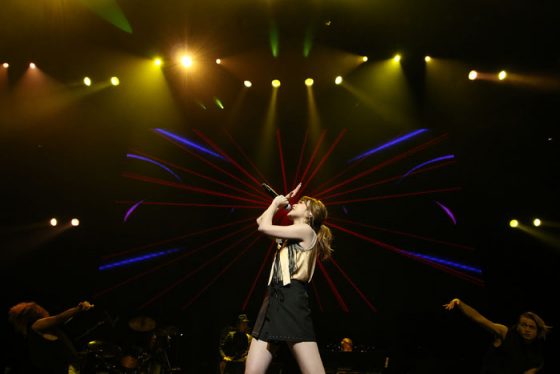
In the end, we feel that anime music exists at the intersection of the efforts of creators, fans and critics, and a term like anison is a necessary one, even if only as a glossary term. There are now ‘anisong concerts’, and even anisong festivals around the world. And we haven’t even touched image songs, because…well, we’re not perfect. However, maybe we should first judge the music as simply…music. So we must ask you, our readers: how do you feel about horror anime music, and the anison/anisong label? Before reading this article, did you know such a term existed at all? Do you feel it does the movement justice, that it’s respectful of both the music itself and its fans? Do you think it’s good that we can label a song both as ‘rock’ and as anison? Are there are some problems with it? Please share your thoughts, and also share your favorite anime music in the comments section. If we get enough examples, a community edition of this article is probably going to follow, sooner rather than later.
More Lists
The generally agreed definition of a snuff film is a real (not staged) filmed murder. In some cases, it is viewed for the purpose of arousal. However, this is somewhat… True crime has always mustered a strong, morbid curiosity from society. From the events unfolding on live news feeds to popular podcasts and video essays, this macabre fascination seems to… From the dawn of humanity’s time on this Earth, fear has been the most important feeling for the survival of man. It is what keeps us alive, the reason we… Today, I will explore and rank an iconic character of the horror manga: Junji Ito’s Tomie. Tomie Kawakami is one of Junji Ito’s most popular characters and has become a… When looking at the found footage genre, there are many titles that people say were influential in bringing them into the fandom. Often, people point to films like The Blair… Sometimes love makes you crazy, and sometimes makes you want to stab someone right in the middle of their chest. Just as the Japanese term defines it, a “yandere” is…Top 15 Pseduo-Snuff Films – Diamonds In The Snuff
10 Best Asian Films Based on True Crime
Celebrating The Best Hidden Gems of The Found Footage Horror Genre (Part 1)
Ranking Live-Action Performances of Junji Ito’s Tomie
V/H/S Franchise – Ranking all 20 Segments and 4 Films
Top 7 Yandere Anime Characters That Are Not Yuno Gasai


